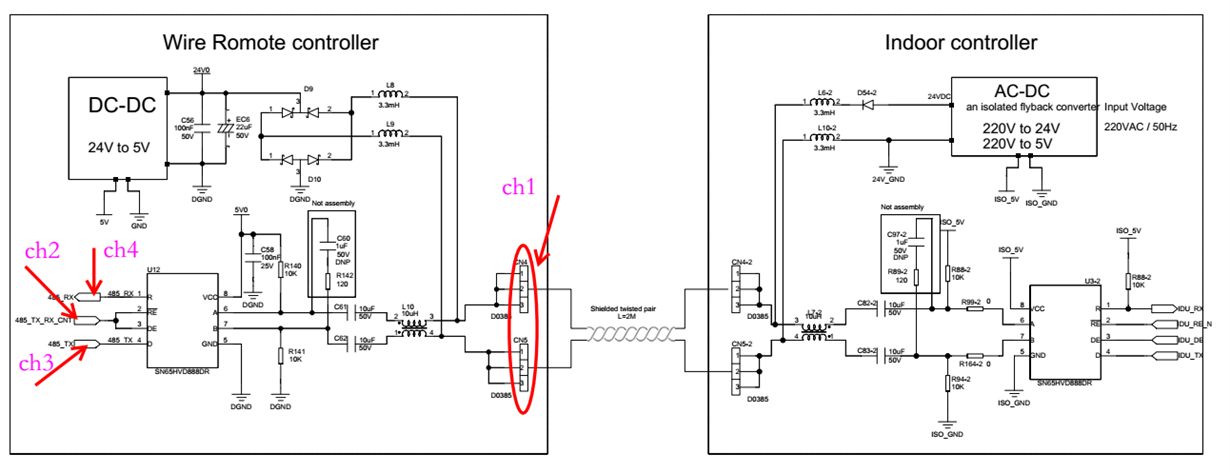Other Parts Discussed in Thread: TIDA-00527, THVD8000, SN65HVD3082E
Hi
We want to use Power over bus solution as the connection between Wire remote controller on the HVAC system. Current, we are evaluating the use of SN65HVD888 chip to achieve this function
we had PCB sample to do some test.
And ,we have some reference like TIDA-00527 and some E2E support forums reference .
Test condition:(The bus has not assembly 120 ohm terminal )(The data used Manchester code ) (Baud rate: 115200 bps)
I have some question about the wave Ch1(CN4 - CN5) . Hope to get your support.
① Why is the waveform of channel 1 not symmetrical at 24V, and offset up and down by ±5V ? Did we miss any design requirements ?
② There are step on the positive signal to negative. I don't know why this step exist ? Show Q2 indicator in the below picture .
1. Schematic & Test wave
Best Regards
Ethan Lu
Aug / 07 / 2020






